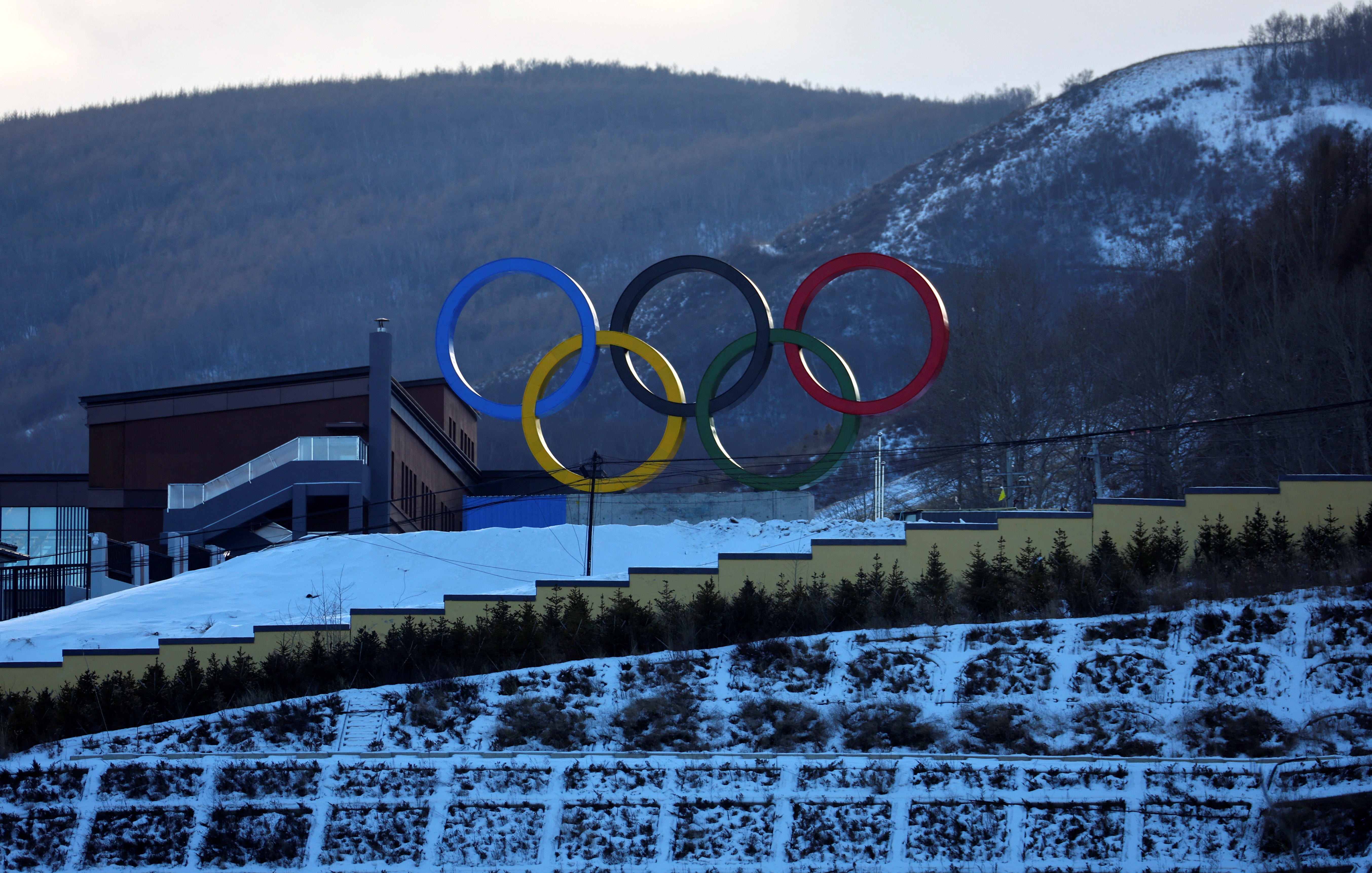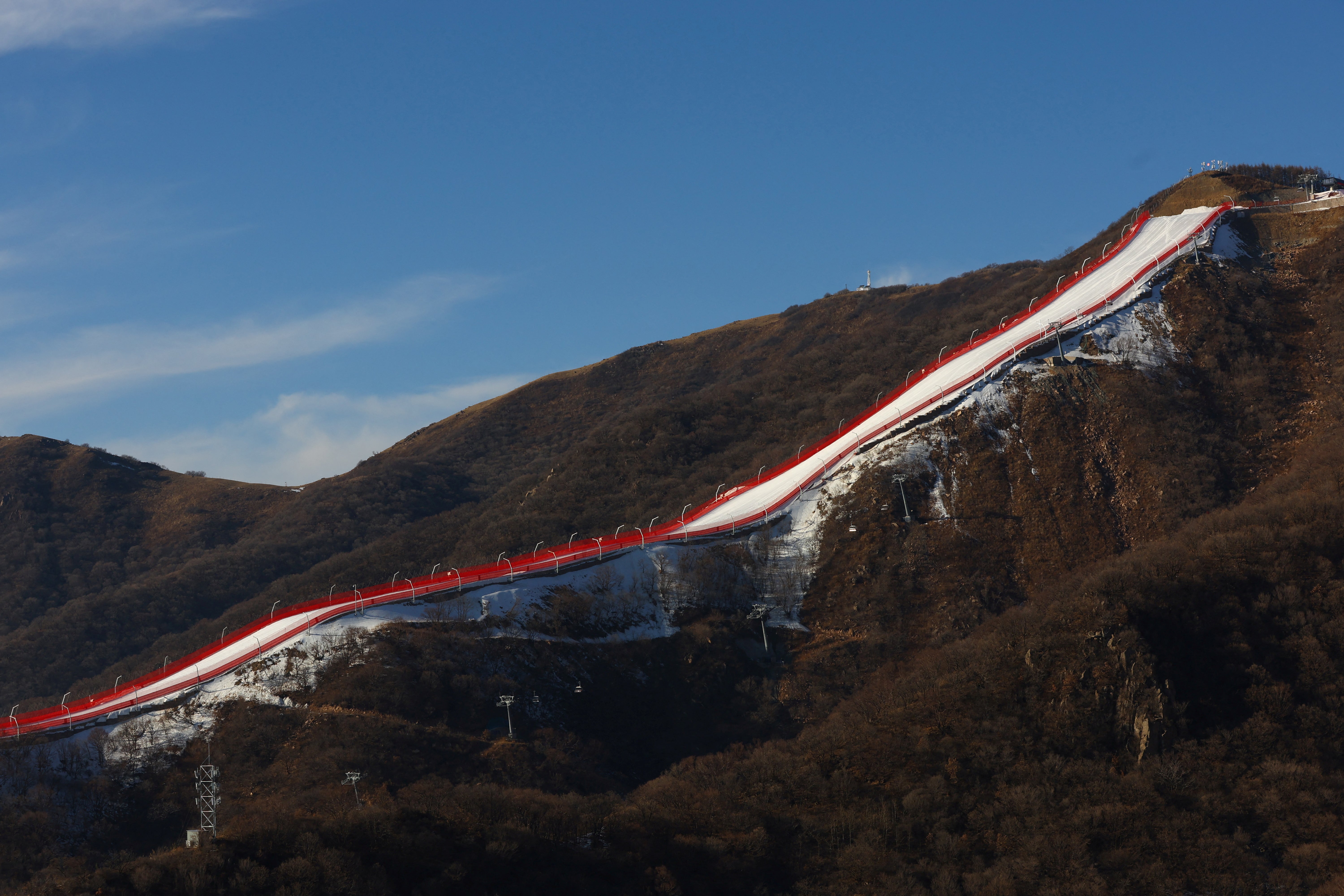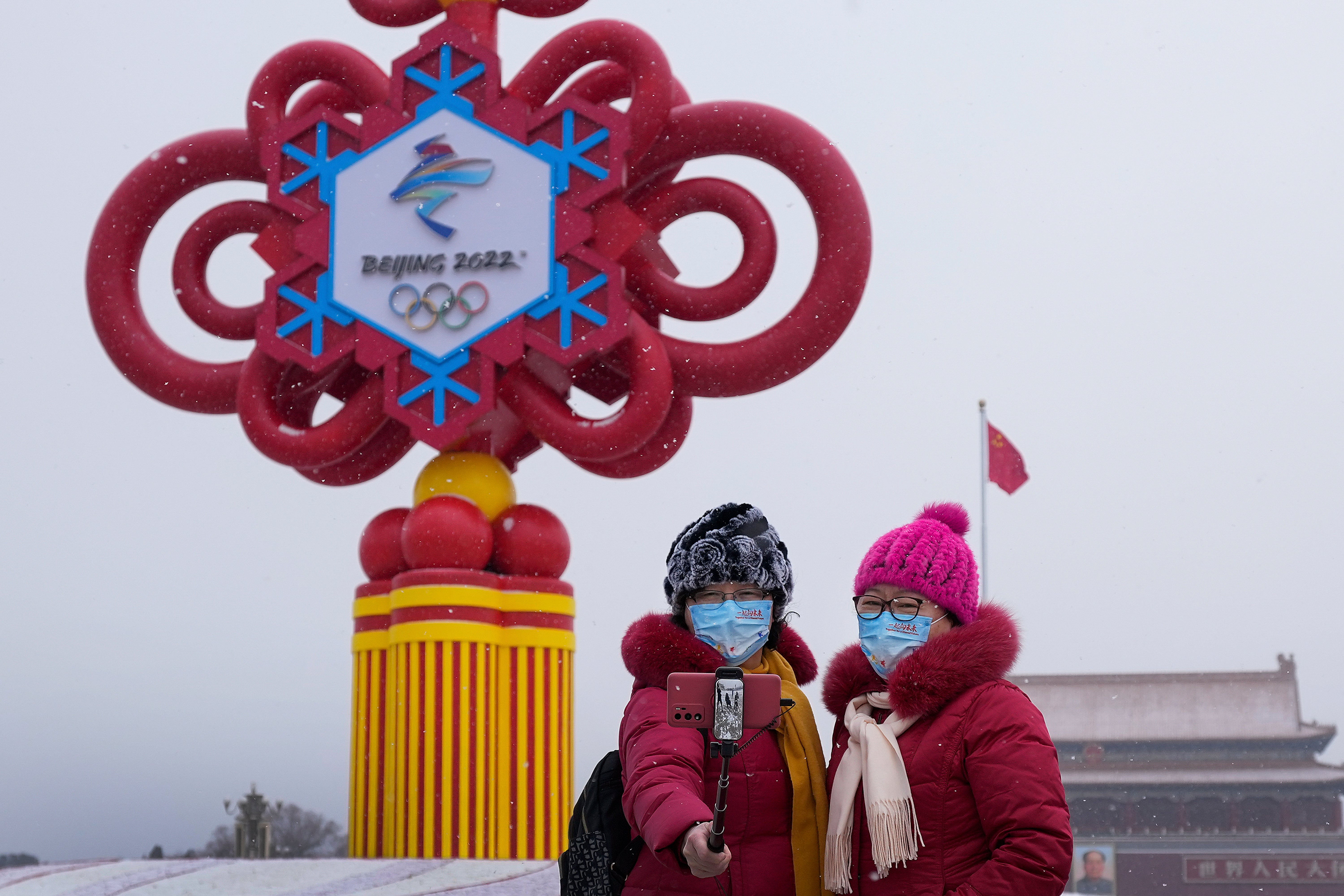The Winter Olympics and the true cost of fake snow dominating the slopes
The Beijing Olympics is not the first winter games to use fake snow which has received a mixed response from athletes and ski enthusiasts, Louise Boyle writes


Your support helps us to tell the story
From reproductive rights to climate change to Big Tech, The Independent is on the ground when the story is developing. Whether it's investigating the financials of Elon Musk's pro-Trump PAC or producing our latest documentary, 'The A Word', which shines a light on the American women fighting for reproductive rights, we know how important it is to parse out the facts from the messaging.
At such a critical moment in US history, we need reporters on the ground. Your donation allows us to keep sending journalists to speak to both sides of the story.
The Independent is trusted by Americans across the entire political spectrum. And unlike many other quality news outlets, we choose not to lock Americans out of our reporting and analysis with paywalls. We believe quality journalism should be available to everyone, paid for by those who can afford it.
Your support makes all the difference.The forecast for the Beijing Winter Olympics is chilly, dry and with a 100 per cent chance of artificial snow.
The Games get underway on 4th February with downhill skiing and slalom taking place in Yanqing, a dramatic mountainous district about 50 miles from the Chinese capital.
Yet the region, along with Zhangjiakou 100 miles northwest where snowboarding, cross-country skiing and ski-jumping events will be held, gets relatively little snowfall.
A few hundred snow cannons, pulling on water from a reservoir, will pump out white crystals at the venues. Photos already reveal brilliant white strips at the Alpine zones, glinting in the sun surrounded by brown vegetation and trees.

China estimates that the snow-making will require 49 million gallons of water, which was highlighted as a risk by the International Olympic Committee’s (IOC) evaluation during the bidding process.
Beijing, is located in a region with year-round water scarcity, and is increasingly reliant on pumping supplies from the flood-prone south of China, while the water resource per capita of Zhangjiakou is less than one-fifth of the national average, China Water Risk reports.
However China says that due to the country’s vast network of reservoirs, Olympic snow-making will put minimal pressure on the local water supply, adding that the winter games are in line with the United Nations Sustainable Development Goals.
The IOC told The Independent that snow production capabilities for the Beijing games “have been developed according to the highest technical and environmental standards”.
“We commend the authorities for reaching out to the best available experts to ensure that they are implementing best practices,” a statement continued. “A series of water-conserving and recycling designs have been put into place to optimise water usage for snowmaking, human consumption, and other purposes.”
The Beijing Organising Committee for the 2022 Olympic and Paralympic Winter Games did not respond to a request for comment.
It’s not the first time that fake snow has been deployed at the Winter Olympics - but it is the first time that the winter games will be run entirely on artificial powder.
The 2018 Winter Olympics in South Korea in Pyeongchang also used almost entirely fake snow. Artificial flakes were first used when the winter games were held at New York’s Lake Placid in 1980, then again in Vancouver (2010) and Sochi (2014).
Manmade snow and real snow are “substantially different”, Dr Dan Cziczo, professor and department head of the Earth, Atmospheric and Planetary Sciences at Indiana’s Purdue University, told The Independent.
Natural snowflakes begin in the clouds. If it’s cold enough, then tiny aerosol particles in our atmosphere act as “little ice nucleating particles” for crystals to form around, Dr Cziczo says.
“Snowflakes have these beautiful, fractal patterns with six arms that take all kinds of different shapes, almost like fingerprints,” he said. “Scientists can crack open snowflakes and at the center find these very special particles.”
Artificial snow is made differently depending on whether it’s for commercial use or recreation. After the Second World War, scientists (including Bernard Vonnegut, older brother of the legendary counterculture author Kurt) began exploring ways of making artificial snow to enhance snowpack - the amount of snow on the ground - so there would be more water during springtime melt for farmers and communities.
One popular way of making fake snow for recreation involves a naturally-occurring bacterium, Pseudomonas syringae, which appears on the surface of tomato plants.

“If you're a gardener and leave tomatoes out when it goes below freezing, the tomatoes will wilt and die almost immediately and it's largely caused by these bacteria on their surface,” Dr Cziczo said.
He said Pseudomonas syringae has adapted to nucleating ice in order to gain a natural advantage. “[The bacterium] breaks down cells of the tomato plant, and eats the stuff that comes out of the cells that have been destroyed,” Dr Cziczo added.
So when a mix of water and these bacterial fragments are sprayed from snow cannons at a few degrees below freezing, artificial snow is produced. While it’s a wildly inventive bit of science, Dr Cziczo says that most people can tell the difference from real snow.
“I think most people find [artificial snow] to be much icier and slicker,” he said. “Skiers refer to liking ‘fresh powder’ days - that sort of light and fluffy feel. When you’re doing this artificially, it’s a thicker and denser coating of material. Recreational skiers still far prefer natural snow.”
‘Try jumping out your car onto a wooden post at 42km/h’
Some elite Alpine athletes have recently raised their concerns about competing on artificial snow.
“We go very fast on the downhills,” Olympic gold medalist and US Nordic ski team member Jessie Diggins told The Associated Press this month, noting she had reached speeds of 76 kilometers per hour (47mph) on the downhills on manmade snow.
“I think it is getting a little more dangerous and I’ve noticed at the World Cup when it is manmade snow, it is scary because instead of sliding on snow you’re sliding on ice,” added Ms Diggins. “I think we’re seeing a higher percentage of falls. I feel it is a little more dangerous now.”
British cross-country skier and three-time Olympian Andrew Young fractured his fibula during a race in Sweden last January after crashing through a fence - but fortunately was back competing in four weeks. He later tweeted: “If you want to experience it your self. Try jumping out your car onto wooden post at 42km/h.”
Iain Martin, 55, a lifelong skier and host of The Ski Podcast, told The Independent that athletes who competed at the last Winter Olympics in Korea would be used to artificial snow but that it wasn’t ideal for some events.
He referred to the “Big Air kicker” - a discipline in freestyle skiing and snowboarding which involves athletes launching off a ramp, performing acrobatic moves in mid-air and then landing on the slope below.
“When you’re in the air for seconds at a time and then landing, it does make a difference what you’re coming down on to,” he said. “They would much prefer to have real snow, there’s no doubt about that, but then these days [artificial] is part of the business.”
Mr Young said that climate change has “definitely changed” the sport, causing limited natural snow but noted that race courses have been made tighter so athletes pass by spectators and TV cameras more times.
“Shorter loops mean more corners, which means more crashes,” he told AP.
John Morton, a two-time Olympic biathlete and founder of Morton Trails, a Vermont company that designs ski trails, made a similar point.
“One of the realities of these sports is that television drives a lot of the decisions,” he told The Independent.
He pointed out that at the Lake Placid Winter Olympics in 1932, the men's 50km cross-country race was a 25km loop skied twice, with spectators and officials seeing the athletes three times over the course of about four hours. In Vancouver in 2010, it was a 5km loop.
“Then they don't need 15 or 20 different TV camera locations but can use five and cover the whole event,” he said.
“If you talk to the skiers, most of them are willing to make that trade-off because now their sport is more visible. More people are watching and enjoying the events as opposed to a generation ago when they were basically competing in obscurity.”
He also pointed out that while artificial snow can be faster, today’s athletes are also stronger, better trained and equipped with faster skis and wax than in the past.
Mr Morton said the manmade snow provides a reliability to winter events that doesn’t exist with Mother Nature.
“The [manmade] snow is more dense,” he said. “In many ways that's a good thing because it holds up better. If there’s a downpour in the middle of January, the natural snow would basically be gone and the machine-made snow holds up.”
The International Ski Federation, governing body for skiing and snowboarding, also told The Independent: “Artificial snow is used in many FIS events and does not pose a greater risk to the athletes. In many cases, it creates a standard surface from the top to the bottom of course, creating stable conditions.”
Fake it to make it
It’s not just elite athletes getting the fake white stuff. While ski resorts around the world have used artificial snow to some extent for decades, it has become more prevalent.
The National Ski Areas Association reports that 91 per cent of US ski areas make artificial snow, and resorts have boosted their snowmaking ability by 60 per cent in the last 20 years.
Rising temperatures linked to the climate crisis are shortening winters and snowfall has declined while precipitation increases, says the US Environmental Protection Agency.
While all seasons have seen climate-driven impacts, it is winter that’s warming the fastest. Between 1972 and 2020, the average portion of the US covered by snow decreased at a rate of about 1,870 square miles per year.
The story is much the same at the revered European resorts. The Organization of Economic Cooperation and Development (OECD) warned 15 years ago that rising global heat could jeopardize as many as two-thirds of the continent’s ski locations.
The long-term forecast appears bleak. “Within 50 years all ski resorts below 1,200m won’t have a chance and will go out of business,” Michel Revaz, of Liechtenstein-based Alpine conservation society Cipra, told The Independent back in 2006.
A 2018 report from climate nonprofit Protect Our Winters linked low snow years with negative economic impacts. In years with lots of snow, more people went ski-ing, adding $693million to local economies and creating 11,800 extra jobs. Losses stretched to $1bn and cost 17,4000 jobs when the flurries were fewer.
To survive, the industry has turned to snow-making machines but it comes with a hefty price tag. Resorts can spend $500,000 - $3.5million each season to make snow, making it difficult for mom-and-pop slopes to stay in business.
There’s also the environmental toll. As China’s snow-making operation indicates, artificial snow is water-intensive. By one measure, it takes 200,000 gallons of water to cover an acre with a foot of snow.
Advocates of artificial snow note that about 80 per cent of that water ends up back in the watershed. But as regions, like the US West, suffer from increasingly prolonged and severe climate-driven droughts, some are redrawing the rules around water for artificial snow, or seeking alternatives.
In Flagstaff, Arizona, using sewage wastewater as the basis for artificial snow at one resort caused uproar. Environmentalists warned of the risk of pharmaceuticals and other contaminants getting into the watershed, and Indigenous activists decried the wastewater snow as desecration to a sacred mountain.
Artificial snow also poses other problems such as erosion, and long-term damage to vegetation which is typically scrubbed down before snow is packed on.
Then there is the carbon footprint. Robin Smith, president of snow gun manufacturing and consulting company MYNEIGE Inc, told ESPN that he estimated around 67 per cent of energy consumed at ski resorts each season goes on snowmaking.
Using fossil fuel-powered energy to create fake snow, while increasing planet-heating emissions that are causing less natural snowfall, appears the definition of insanity.
The irony with making snow,” Auden Schendler, Aspen Skiing Company’s vice president of sustainability, previously told Sustainable Play, “is that you’re basically cannibalizing the climate.”
There are sustainable paths and some ski resorts run their snow cannons entirely on clean power. For example, Jiminy Peak, in Massachusetts, powers a third of the resort’s energy usage with a wind turbine. Vail Resorts, which owns and runs 40 mountain resorts in three countries, committed in 2017 to 100 per cent renewable energy.
Others bank rainfall and use that to make artificial snow. Another strategy is “snow farming”- storing last year’s snow under tarpaulins or sawdust to be reused.
“A lot of ski areas recognize that many of their guests and visitors are very concerned about the environment and climate change, and many are leading the way in terms of trying to minimize their carbon footprint,” Mr Morton says.
The ski and snowboarding industry is increasingly focused on growing markets like India and China when it comes to the future of winter sports. But snow or no snow, the real deal or fake, the old-guard of European and US ski hubs refuse to be counted out yet.
The Winter Olympics will be held in the Italian cities of Milan and Cortina d’Ampezzo in four years time while Utah is hoping to host in 2030 or 2034.
Join our commenting forum
Join thought-provoking conversations, follow other Independent readers and see their replies
Comments